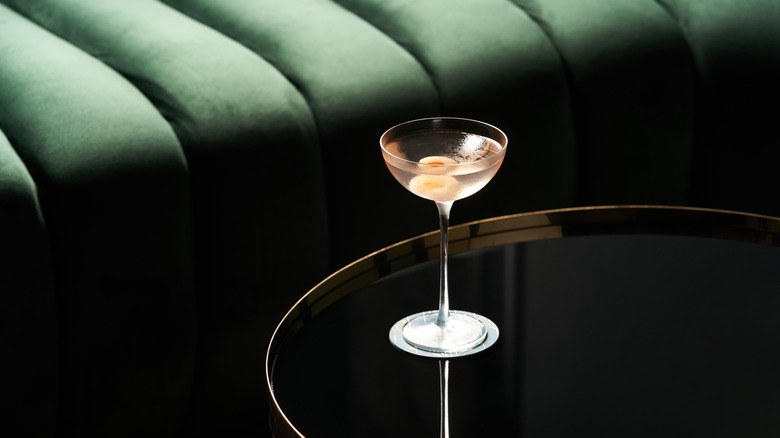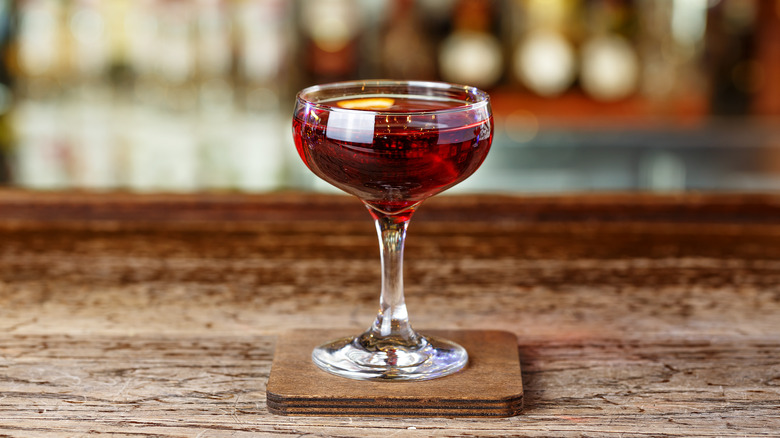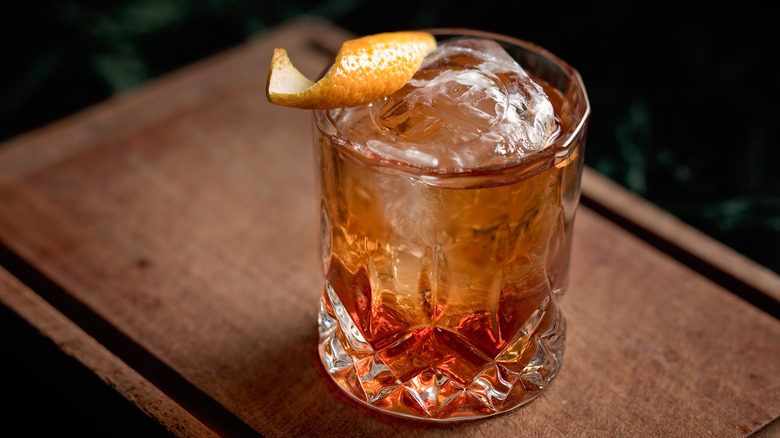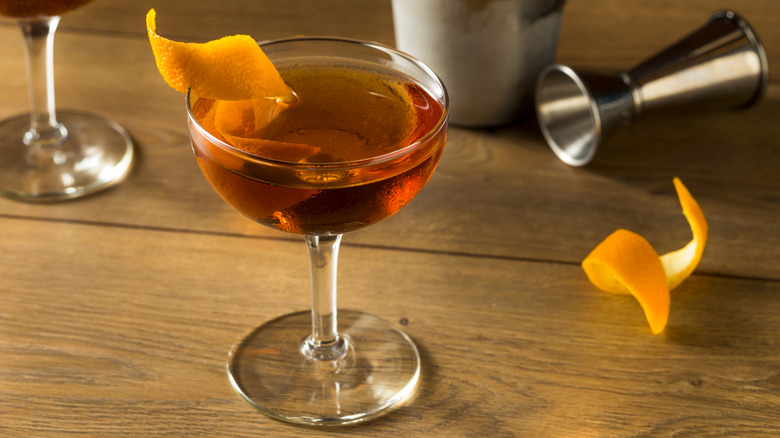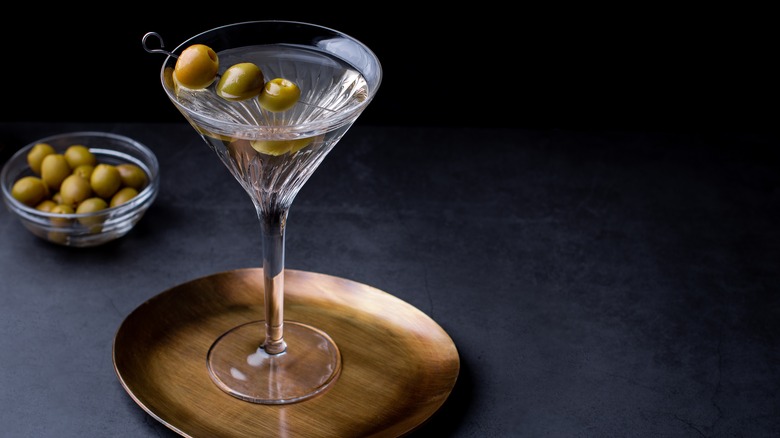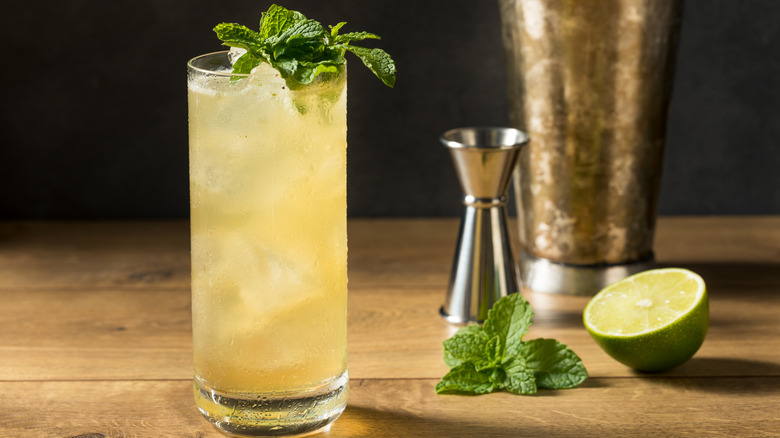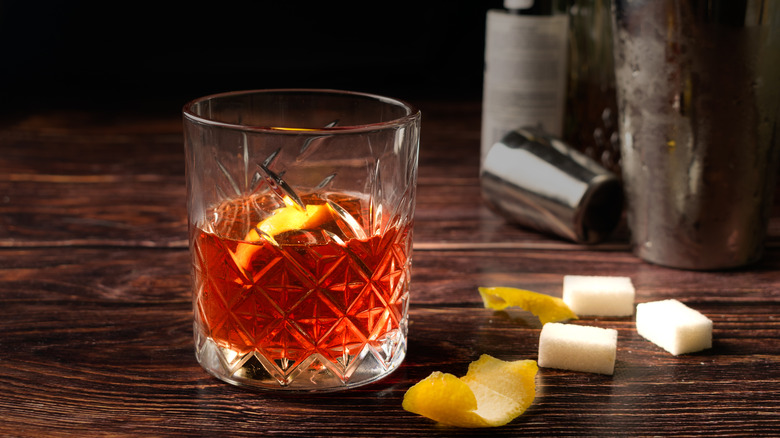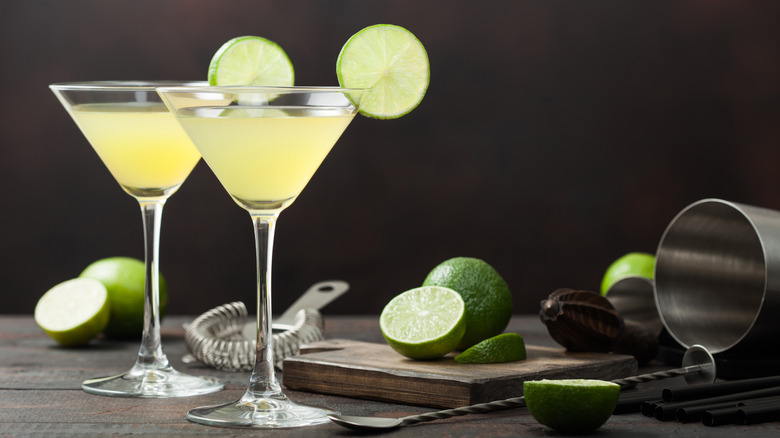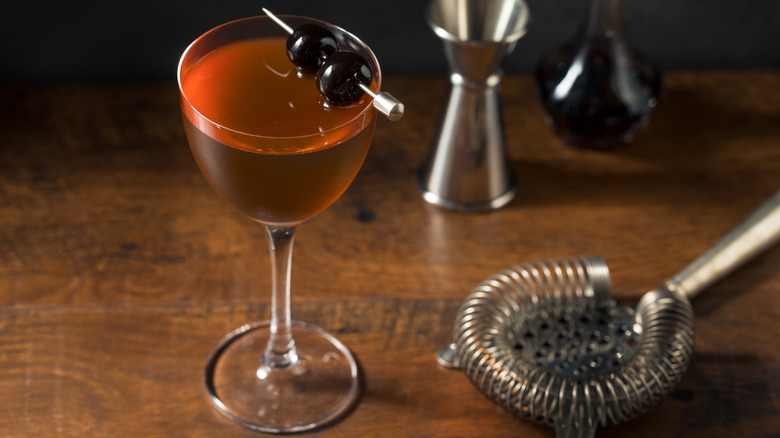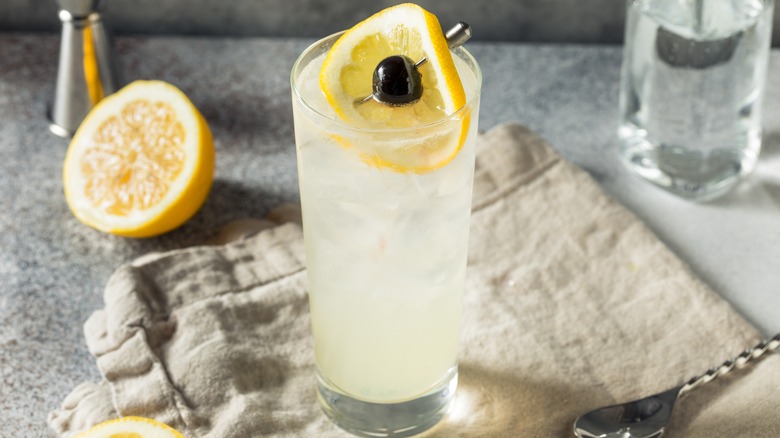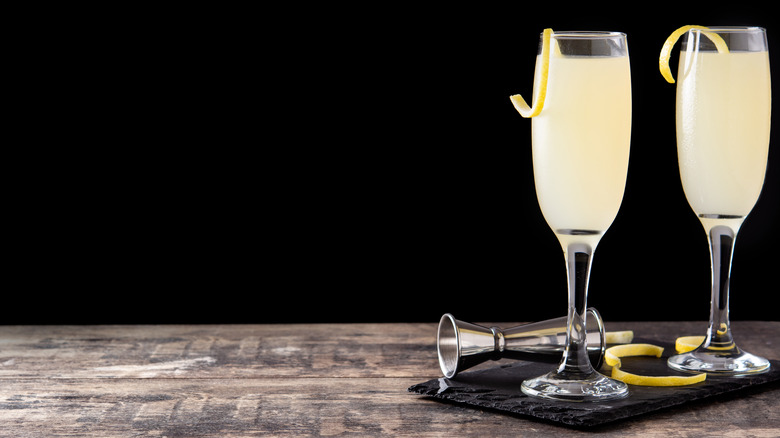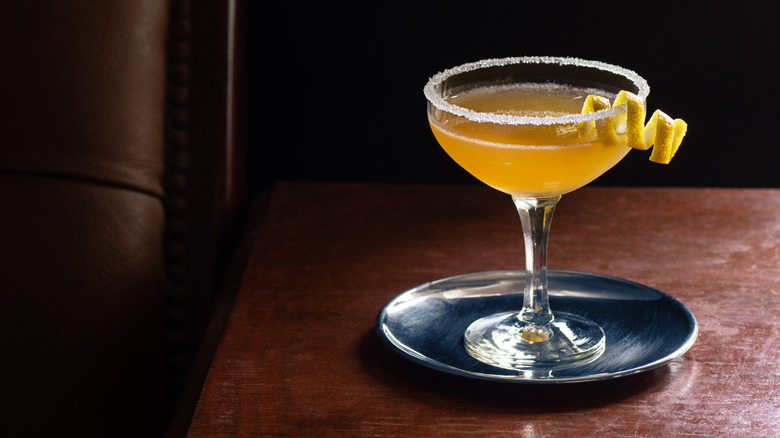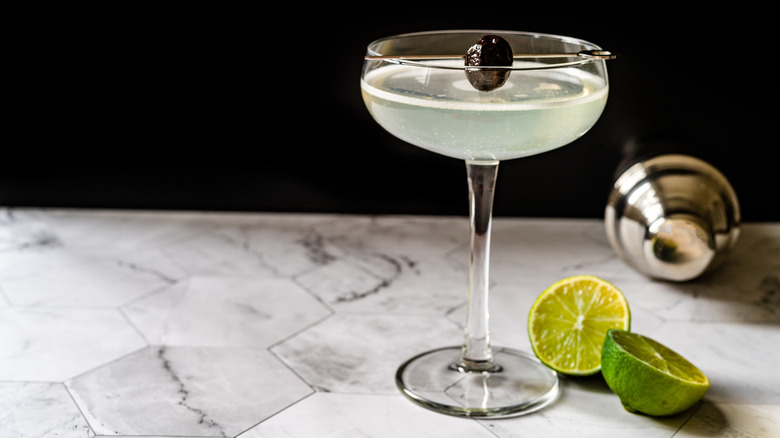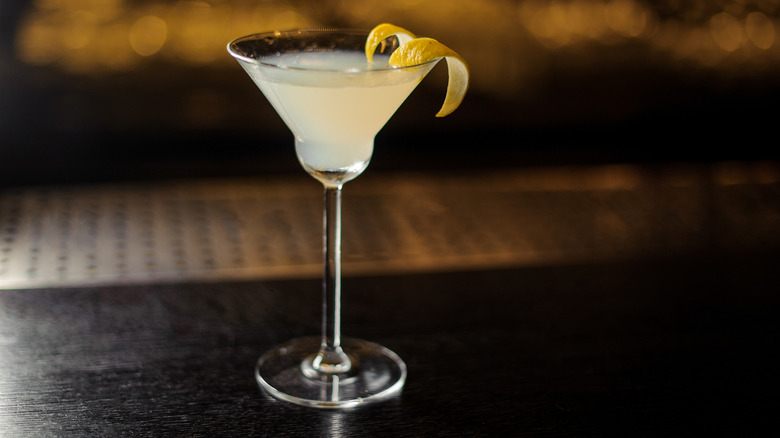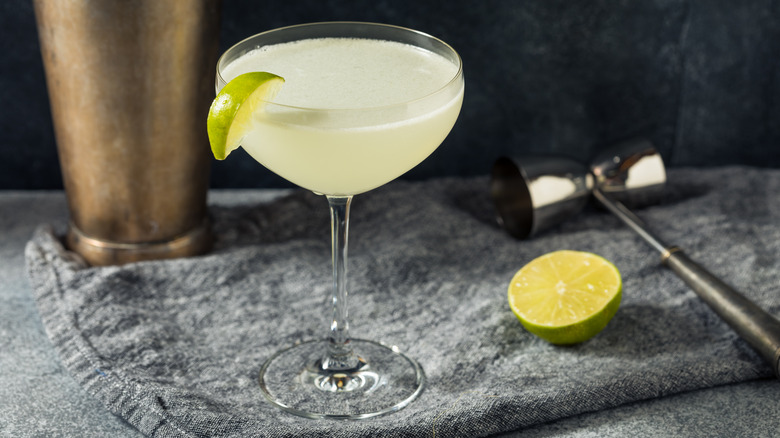The 14 Best Pre-Prohibition Cocktails
Cocktail culture is currently in the midst of a massive renaissance. The revitalization of innovation in the industry, whether it be the drinks themselves or the bars in which they are made, has seen the emergence of instant modern classics as well as a reemergence and reimagining of timeless icons. Despite the many modern riffs on some classic cocktails, there are some whose original recipes just cannot be beaten.
The Prohibition era and period immediately following is commonly thought of as a golden era of cocktails, but many of the iconic drinks we still enjoy today actually pre-date Prohibition. Even though enjoying them was difficult and illegal in the United States for over a decade, many of them not only survived but came out just as popular on the other side. Furthermore, many of these have sustained in popularity to this very day, a testament to their rare attribute that some things are so great they simply can't be improved. The following includes these all-time greatest hits.
The Manhattan
The classic Manhattan is one of the most well-known cocktails on the planet and is also one of the oldest. The classic two-to-one combination of rye whiskey and sweet vermouth mixed with a few dashes of Angostura bitters is undeniably delicious, as it remains one of the most popular cocktails over a century and a half after its creation.
The origins of the Manhattan are not precisely certain, but what is known is the cocktail emerged during the latter half of the 19th century, per Spirit of York. The first known publication of the drink, however, came in 1882 in an article in the Sunday Morning Herald, a newspaper in Orlean, New York. Two years later, the exact recipe sustained today was published in O.H. Byron's "The Modern Bartender's Guide."
The original recipe does call for rye whiskey, but it is not uncommon for Manhattans to be requested with bourbon. While often discouraged by Manhattan purists, this substitution is part of what makes this cocktail great. Its simple template can be mixed to your personal liking, so you can use an American whiskey with any sweet vermouth and call your claim a customized version of this cocktail for yourself.
Old Fashioned
The Old Fashioned is another cocktail created in the 1800s, credited to James E. Pepper, a bartender and bourbon savant in Kentucky. When at The Pendennis Club in Louisville. While at the social club, Pepper requested a drink from the bartender "in the old-fashioned way."
This was in reference to the popular cocktails found in "Jerry Thomas' Bartender Guide: How to Mix Drinks," published in 1862 (via Thrillist). Thomas's gin cocktail included gin mixed with a lump of sugar, water, and bitters. So, Pepper's request was adhered to with bourbon, and the cocktail has remained the same since.
The Old Fashioned is another cocktail that can be customized with different types of whiskey as well as different sweeteners and bitters. There are now countless variations on the Old Fashioned. Liqueurs like maraschino, Benedictine, or a rinse of absinthe can add a whole extra layer of complexity, and complete reinventions like the Oaxacan Old Fashioned turn the cocktail into something new, but still familiar.
The original, however, really does capture the concept of beauty in simplicity. A bitters-soaked sugar cube, the tiniest splash of club soda, and two ounces of bourbon over a big rock of ice with an orange twist truly tough to beat. This cocktail rightfully holds a place on the Mount Rushmore of cocktails. It's timeless, it's straightforward, and it's delicious.
The Martinez
The Martinez is another classic cocktail with a murky origin. Experts believe the Martinez was the bridge between the Manhattan and the Martini, according to Difford's Guide. In fact, the first known publication of this drink came in the same book as the Manhattan, in O.H. Byron's 1884 "The Modern Bartender." The recipe is included directly under the Manhattan and simply reads, "Same as Manhattan, only you substitute gin for whiskey." In the years following, however, the Martinez was published again in an updated edition of Jerry Thomas's bartender's guide and included maraschino liqueur.
Now, the recipe for a Martinez is established to be Old Tom gin, sweet vermouth, maraschino liqueur, and bitters. It is essentially a mellower, more layered version of a martini, despite being invented first. Where a martini is dry and straightforward, the Martinez is softer and more complex. This drink really can best be described as a cross between a Manhattan and a Martini, so, if you like those, giving this one a try is a must.
The Martini
Once again, as is the case with many cocktails this old, no one knows exactly where the Martini came from. As mentioned earlier, the Martini is said to be an evolution of the Martinez, but, other than that, there is no clear origin, per Difford's Guide. What is certain is that the Martini became popular in the early 1900s and has since grown to mean countless different things.
There are gin Martinis, dry Martinis, vodka Martinis, 50/50 Martinis, reverse Martinis, dirty Martinis, and the many fruit-flavored iterations that aren't actually Martinis. Anyone who enjoys a martini is most likely very particular about it. Not only are there the many forms it comes in, but also how they like the cocktail to be made. Shaken, stirred, with olives, or with a twist, the minimal ingredients really does puts significance on the method.
The traditional Martini is made by stirring together two parts of gin, one part of dry vermouth, and a couple of dashes of orange bitters. Obviously, everyone has their own preference, but for those who have never had a Martini, this is the version you should start with. From there, you can discover what you like or don't like and, before you know it, you will be able to recite your Martini to a bartender in your sleep.
Mamie Taylor
If you have heard of the Moscow Mule, say hello to its parent cocktail, the Mamie Taylor. You probably have never heard of this drink before, but at one point in time, the Mamie Taylor was so popular that bartenders heightened its price so they wouldn't have to make it so often, according to Stories and Sips. The first Mamie Taylor dates back to 1899, created in Rochester, New York. Mamie Taylor's actual identity is a mystery, but there are many theories regarding it, including one that claims the drink is named after an opera singer of the era.
This precursor the mule is an equally simple cocktail. Two ounces of blended scotch, the juice of one lime, and a topping of ginger beer on the rocks are all required to mix this classic. Nowadays, this drink can be ordered simply as a Scotch Mule, but the Mamie Taylor will always hold the credit for the iconic combination of spirit, lime, and ginger beer — copper mug not included.
Sazerac
There is no cocktail more synonymous with a certain city than the Sazerac. Even more so than the Manhattan is associated with New York, the Sazerac is the prideful icon of New Orleans. According to Imbibe, the name of this drink is traced back to a massive French company of the 19th century that exported its brandy to New Orleans. The name then became the name of a coffee house, but these coffee houses actually sold more booze than coffee.
At this same time, Antoine Amedee Peychaud advertised that his bitters were available at the Sazerac Coffee House, so it is possible that the first Sazerac cocktail was mixed here, but the exact origin remains uncertain. What is factual is that the Sazerac became the cocktail of New Orleans and still holds that position to this day.
The first Sazeracs, which came about in the 1850s, were made by mixing French brandy, Peychaud's bitters, sugar, and a rinse of absinthe. A few decades later, the cognac was replaced by rye whiskey. Today, the cocktail can be made with either or a combination of the two. This cocktail is not only a great alternative to an Old Fashioned but also an excellent starting point for those who have never had an absinthe cocktail.
Gimlet
The Gimlet is one of the most famous gin cocktails, right up there with the gin and tonic. This all-time great is another super simple cocktail, made up of only three ingredients. The shaken combination of gin, lime juice, and simple syrup is served up in a vibrant, refreshing, elegant classic that is as tasty to gin lovers as it is to newcomers to the spirit.
Unlike most cocktails on this list, the Gimlet's origins are actually well documented. In the 19th century, many members of Great Britain's Royal Navy suffered from scurvy during long voyages abroad, per Spirits Beacon. This disease is caused by a lack of vitamin C, so soldiers began taking daily doses of lime juice to boost their intake. Naturally, the lime juice was added to the London dry gin of their homeland, which was actually recommended by Sir Thomas Desmond Gimlette, who the cocktail is named after.
The drink grew in popularity among drinkers as the soldiers brought it home with them, and was eventually altered with the addition of simple syrup to help balance out the lime juice. The Gimlet is a great example of the principles of balancing a cocktail, and just one sip of this classic will attest.
Rob Roy
This next cocktail is another Scotch whisky cocktail and is a very simple variation of the Manhattan. Rye whiskey is substituted for Scotch whisky and you have yourself a Rob Roy. The riff was made in 1894 by a bartender working at the Waldorf-Astoria Hotel in New York City, according to Gunther Toody's. The bar was located close to a theater that was debuting a musical Robert Roy MacGregor, a Scottish folk hero. In order to commemorate the musical, the bartender made the simple whiskey swap in everyone's favorite cocktail of the time, and the Rob Roy was born.
Like Manhattans, Rob Roys can be made with whichever Scotch you like. The typical and most common form is made with blended scotch, but you can easily request your own preference or mix one yourself at home. An Islay Scotch will bring a firm peatiness and smokiness to the drink, while a Speyside Scotch will make a softer, more easy-sipping cocktail. If you have a bottle of Scotch and a bottle of sweet vermouth already, the Rob Roy is well worth a try.
Tom Collins
The first known publication of the Tom Collins is another one found in "Jerry Thomas's Bartender's Guide," in the 1876 edition, according to Spirits Beacon. Initially, the cocktail was regarded as its own category, meaning it can be made with any spirit you like as opposed to being a gin cocktail exclusively like it is today.
According to legend, the cocktail gets its name from a practical joke. Apparently, Tom Collins was a fictional character that would show up to bars and disparage people behind their backs. The victim would then catch wind of his unkind words and come to the bar to confront him. Upon arrival, he would look around and then ask the bartender for Tom Collins, at which point he would be given the cocktail.
The Tom Collins has sustained as one of the all-time greatest hits of gin cocktails. Essentially, it is just a gin sour lengthened with soda water and served in a highball glass. The classic combination of gin, lemon juice, and simple syrup is just made even more approachable and refreshing with some bubbliness and extra dilution. When the summer months return and temperatures are on the rise, a Tom Collins (or two) is all you'll need to stay cool.
French 75
Continuing on with gin classics, if you like a Tom Collins, the French 75 is the next step on the gin journey. This light and bubbly combination of gin, lemon juice, simple syrup, and champagne is classy, vibrant, and just delicious.
The French 75 gets its name from a French firearm that was used in World War I, according to Difford's Guide. The French 75 was a very powerful weapon capable of damaging aircraft as well as tanks. The cocktail was invented during or before wartime at Henry's Bar in Paris. The first iteration of the cocktail, however, was different from what it is now. At first, it was made by mixing gin, applejack brandy, lemon juice, and grenadine. The cocktail underwent multiple developments in the years following, eventually landing and staying put on what it is recognized as today.
This cocktail is the natural evolution of gin drinks. From the gin and tonic to the Tom Collins, the French 75 is another example of why gin never deserves a bad reputation. To anyone who claims they do not like gin, one sip of a French 75 will surely change their mind.
Sidecar
The Sidecar came about just before Prohibition was passed, though it only had so much influence on the cocktail since it was invented in Europe. According to Vinepair, the Sidecar was created in either London or Paris. One of the earliest publications of the drink came in a book by Harry MacElhone in 1919, in which he credits the Sidecar to Pat MacGarry, a bartender at Buck's Club in London. However, the two bartenders made the drink differently from another esteemed bartender of the time, Frank Meier, a dissimilarity that is still debated today.
MacElhone and MacGarry mixed the Sidecar with equal parts cognac, orange liqueur, and lemon juice, while Meier did so with two parts cognac to one part orange liqueur and one part lemon juice. Today, some consider the former to be bland while others consider the latter to be too boozy. No matter your preference, the Sidecar can come in a form that fits your liking.
Many bartenders today still serve Sidecars in a sugar-rimmed glass, which was initially done as an evolution of an older drink, the Brandy Crusta. This is another challenged aspect of this controversial cocktail, but as always, enjoy your cocktails the best way you know how.
The Last Word
The Last Word is one of the earliest equal-parts cocktails and the one that has inspired countless modern riffs such as the Paper Plane and the Naked and Famous. Equal parts cocktails consisting of hard liquor, liqueur, and citrus are truly a thing to behold, and the Last Word is the reference point for all of them.
This equal combination of gin, maraschino liqueur, green chartreuse, and lime juice was first published in 1916, in an edition of the Detroit Athletic Club's magazine (via Difford's Guide). There was no recipe for it, exactly, but it was included in the bar's menu, listed at twice the price as a Manhattan.
There is dispute over its exact origins, but the two most common ones revolve around Frank Fogerty, a popular vaudeville entertainer of the time. Either Fogerty encountered the cocktail at the bar and loved it so much that he asked the bartender for the recipe so he can order it back in New York, or Fogerty encountered it in New York and brought the recipe with him to Detroit. Either way, the Last Word is a mighty fine drink and one whose influence on cocktail history deserves all the praise it is given.
White Lady
The White Lady is essentially a gin version of the Sidecar. The combination of gin, orange liqueur, and lemon juice is shaken and traditionally served up in a coupe glass. The inclusion of egg white in the cocktail is also common but is not firmly included in modern recipes. This is another cocktail credited to Harry MacElhone, who is believed to have invented it at Ciro's Club in London in 1919, according to Difford's Guide.
This original White Lady, however, was an equal parts mix of brandy, creme de menthe, and Cointreau. The White Lady recognized today was reinvented by MacElhone in 1929, this one including gin and losing the creme de menthe for lemon juice. Although this version was technically created during the Prohibition era, the original does predate it. Besides, the White Lady is still an all-time great cocktail and another one that only calls for three, very common home bar ingredients.
The Daquiri
In the late 1890s, Americans began expeditions in Cuba in search of industry, per Difford's Guide. One of these Americans was Stockton Cox, who settled in the town of Daquiri to exploit the iron mines there. He noticed that the engineers he employed often added Bacardi rum to their evening coffee as well as took rations of the spirit to curb the threat of Yellow Fever.
Cox began experimenting with this new spirit he was unfamiliar with and eventually combined it with the lime and sugar, which is one theory of where the Daquiri came from. The other theory is that Cox ran out of gin before hosting American guests, so, instead of serving them straight rum, he did so with sugar and limes.
Whichever theory is actually true, all that matters is that Cox's creation has become one of the most revered cocktails of all time. In fact, many bars test potential new bartenders by having them make a Daquiri, as it is the quintessential cocktail for understanding how to balance a drink.
The unreproachable recipe today calls for two ounces of rum, three-quarters of an ounce of lime juice, and three-quarters of an ounce of simple syrup. The best part is, a Daquiri can be made with whatever rum you like. White rums will be more classic and straightforward, while aged or dark rums can add another layer of complexity.
